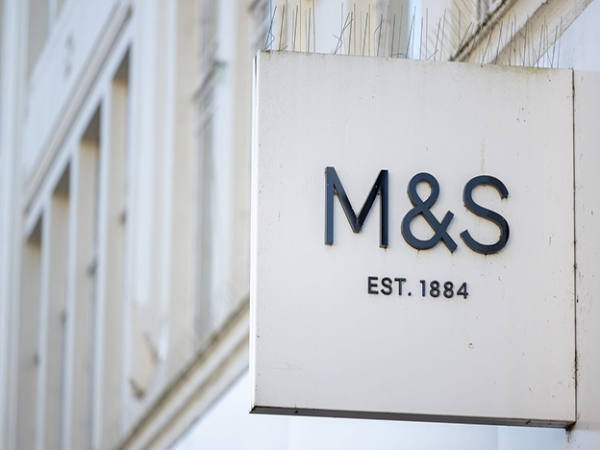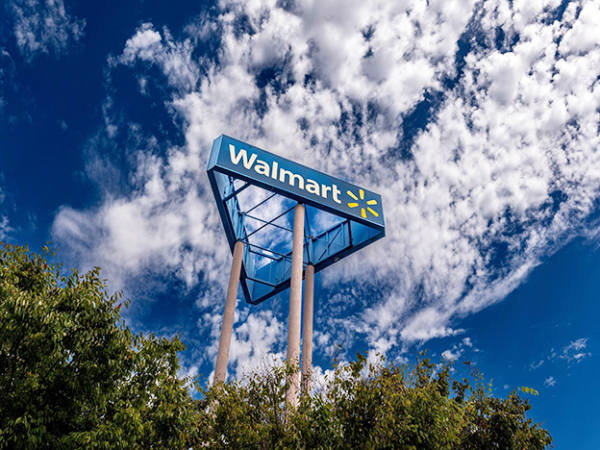The US is the world's largest retail market, and it is a sector that has enjoyed a strong trading climate in the past couple of years, largely due to the combined impacts of the $800bn (£634bn) in stimulus cheques (equal to five weeks’ retail sales) and other stimulus programmes. Having chugged along since the financial crisis with annual industry growth (volume plus inflation) of around 4 per cent, 2021 saw sector expansion of almost 20 per cent, which bled into 2022 when growth was still close to double-digit levels. The outlook had been for a return to the long-term norms, but with the strength of the economy, a rampant stock market and high employment, we could be looking at US retail remaining above trend for longer than expected.
Annual US retail sales total around $8tn (which compares with around $650bn in the UK) and, in common with the UK, around 15 per cent of shopping is online, split 60:40 between pure online and location click-and-collect.
Unlike the UK and the EU, grocers are not the largest players (think Tesco (TSCO) in the UK and Schwarz/Lidl in the EU) with the leaders being broader based ‘big-box’ generalists selling food alongside household items, sporting items, white goods, electronics, garden equipment and clothing, occasionally automotive and building products all in the one giant store. Imagine something like Tesco, Currys, Homebase, SportsDirect, Next, Halfords and B&Q in a single footprint.
The other major difference here is choice for investors. The European supermarkets and general retailers are mostly private, and in the UK private equity buyouts have withered an already relatively limited selection of stocks. In the US not only are there a large number of stocks, they generally have a high market value, and there is considerable diversity in how these stocks are positioned. If you like retail, you can effectively run a diverse portfolio within this sector alone.
Big boxes
Here, the leader, and largest retailer overall, is Walmart (US:WMT) with almost $650bn of global revenues from its 10,500 stores (double that of Tesco), 90 per cent of which is from North America. Half of its stores are outside the US, but these are typically only one-third the size of US outlets with materially lower sales. Until 2021 Walmart owned Asda, but along with other European markets, it has fully withdrawn from this region, and overall its non-US businesses do not seem to fare as well. While revenue growth has been okay (3 per cent CAGR since 2011 – although half of this growth has arisen since Covid), profits have barely moved in the past 12 years, leaving earnings growth largely to come from share buybacks. That has, in turn, allowed dividends to almost double (but the stock still only yields 1.3 per cent). Despite this lacklustre trading, total shareholder return (TSR) has averaged almost 11 per cent annually in the past 10 years and the shares are on a greater than 10 per cent premium to the S&P. Walmart is a rock-solid staple, with half its sales coming from highly dependable grocery sales and it reports faster online sales growth than Amazon (US:AMZN). However, Walmart has underperformed the S&P 500 over the long term, and only looks like a market beater recently thanks to the tech sector sell-off in 2022. The company is solid, but dull and feels pretty fully valued and, therefore, not attractive right now.
Better in this segment is Target (US:TGT). Similar in profile to Walmart but one-quarter the size, this stock has been through the wringer in the past two years, halving in value to its late 2023 low point following a series of mis-steps and misreadings of the market. It tried to go upmarket, believing that the premium products on which people were spending their stimulus money was a market shift rather than a glitch. It overexpanded, has suffered from extreme levels of shoplifting, tried and failed to push into city centre markets and ended up issuing profit warnings and suffering downgrades. There is a trust issue here (the same management is still in charge), but trading on a price/earnings (PE) ratio around 10 points below that of Walmart, risk here looks overpriced, making this a decent recovery play. Even after rising more than 35 per cent in the past three months, Target still looks interesting.
A slightly different spin on retail comes via Costco (US:COST). This is where retail meets wholesale with its curious membership-only, bulk-buy-only model that is rumoured to make more money from its near-100 per cent margin annual fees ($60) paid by its 129mn members. Memberships are growing steeply (up almost 30 per cent in three years) as shoppers believe that bulk-buying saves money – that may not necessarily be true, but still they come. Trading has been impressive, with sales doubling and EPS quadrupling in the past 10 years, all from trading and not through using share buybacks – Costco is happier to plough almost all of its free cash flow into driving expansion. That said, the rating is sky high at a PE of more than 40 times, making it more expensive than Apple (US:AAPL), Alphabet (GOOG) and Microsoft (US:MSFT). That doesn’t stack up, and this stock feels expensive.
Pure (almost) online
While the average US retailer sources around 15 per cent of sales online, Amazon is a very different beast. While dabbling on the high street with Amazon Fresh (now $20bn of sales), the overwhelming majority of its retailing activity is solely online ($370bn from its own and marketplace sellers globally). However, today this is not where the interest in this stock lies – that is instead in cloud computing via its AWS (Amazon Web Services) platform, and retailing is now only around two-thirds of revenue. Online retailing here is under attack from better focus by physical retailers and the tidal surge during Covid-19 rolling back. However, that does not matter too much because AWS remains very strong, as does Amazon Prime (via both subscriptions and advertising, including the recent controversial decision to put adverts in movies). While this remains primarily a retailer, it is materially more diverse and dynamic than the traditional players in the retail sector. Cloud computing has hit the doldrums (still market-beating growth but not the 20 per cent-plus we have seen), and after the wider market surge recently, and on a PE of over 40, much of the value here has run out. Well worth picking up when the shares fall back.
Pure grocery
Closer to the UK and European supermarkets are the pure grocery players. The leader in this space is Kroger (US:KR), which runs 2,700 stores plus petrol stations in 36 states under a range of local brands including Fred Meyer, Ralphs, Food 4 Less and Kwik Shop. Annual sales total around $150bn. Kroger is in the process of buying (for $25bn) its largest pure grocery competitor Albertsons (US:ACI) – the deal is still awaiting FTC antitrust clearance and has churned up some strong opposition. This would significantly concentrate food retail into just five players: Walmart, Ahold Delhaize (NL:AD) (owner of the Food Lion, Stop & Shop, Hannaford and Giant brands), Costco, Target and Kroger. It looks as though Kroger needs a vitality injection as forecasts suggest that, as is, it is set to slide sideways, and most analysts see little value in the stock. The outlook for Albertsons is equally flat, so Kroger really needs to believe that two plus two can really equal five. The rationale is to claw back market share from leaders Walmart and, in particular, Costco through an accelerated digital footprint, improved efficiency and gaining national scale. It could be a long haul, but the rating reflects that with a PE ratio of just 10.5 times, well below half that of Walmart and a quarter that of Costco. This could be an interesting but still very speculative buy.
Looking tangentially, one can invest in convenience chain 7-Eleven, but you would have to buy the Japanese stock Seven & I (JP:3382). Steep EPS growth is forecast here (over 60 per cent in the next three years), but investing in Japan can be complex and this is not a pure-play US retail story: 25-30 per cent of sales are from Japan. Nonetheless, an interesting quirk.
Value shopping
Below the mainstream big box and grocery chains sit the discount retailers, either focusing on lesser brands, low price own-brands, ‘pound store’ retailing, bulk-buy breaking or liquidation stocking or WIGIG (when it’s gone it’s gone) sales. These are also known as variety stores. There is high demand for discounted retailing in the US with stretched families more prevalent than a booming economy and high employment might suggest.
The largest player in this arena is Dollar General (US:DG), a $40bn revenue chain with almost 20,000 stores across 48 states. This business makes high margins for a retailer (10 per cent Ebit – Walmart makes 3 per cent, Tesco 4 per cent) and is growing faster too, with analysts pencilling in a compound annual growth rate (CAGR) of c9 per cent in the coming three years. However, the stock looks a little toxic following suggestions of overcharging at checkouts and poor working conditions, and growth expectations have been reined in since last summer. The shares have halved, but so have forecasts in the past 15 months. The path ahead here could remain slippery.
Faring better is the similarly named Dollar Tree (US:DLTR) a 15,000-outlet chain (also covering 48 states) with a ‘five and dime’ and dollar store heritage. On its $30bn of sales it makes more traditional retail margins (low-end at 2 per cent) but is forecast to grow EPS by two-thirds in the next three years mainly via margin uptick. While trading on 23 times earnings and already up 40 per cent in the last quarter, this stock looks more compelling than much of the rest of the retail space.
Drugstores
Drugstores are more than just pharmacies as we would understand them in the UK. American drugstores moonlight as convenience stores, selling confectionery, snacks, alcohol, cigarettes/vapes and a range of ‘fancy goods’, in addition to servicing prescriptions and selling health/personal care products. While they look to nibble at the supermarkets' trade, the boot is increasingly on the other foot, with big box stores in particular looking aggressively to expand in pharmacy sales and the squeeze is on. Walgreens Boots Alliance (US:WBA)'s RiteAid is in Chapter 11 and both CVS (US:CVS) and Walgreens' EPS forecasts have been under acute and chronic pressure – the share prices have followed suit. The shares may look cheap on single-digit PEs but are really a classic value trap with the low ratings reflecting lowering quality of earnings along with growing pressure and risk.
Overall, there is a wide range from which to pick here, but for choice, the recovery prospects of Target and the high expected growth at Dollar Tree look the most appealing. Seven & I could be worth the additional work of buying in Japan, and Amazon could be interesting, but not because of retail and only after a share price correction.












